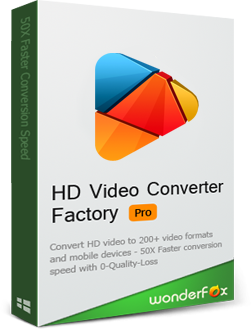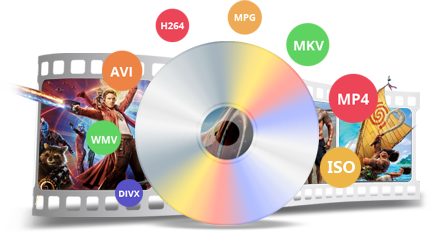If you're a frequent user of VLC Media Player, you may have encountered a frustrating issue where your video playback appears pixelated or blurry. This can be especially frustrating if you're trying to watch a high-definition video. Fortunately, there are 9 solutions you can try to fix VLC pixelated issue and get your video playback looking crystal clear again.
9 Fixes for Pixelated Video Playback in VLC
Solution 1: Transcode Video to VLC Friendly Video Standard
Solution 2: Update VLC Media Player
Solution 3: Disable Hardware-Accelerated Decoding
Solution 4: Fast Forward or Backward the Video
Solution 5: Adjust the Video Output Settings
Solution 6: Increase the File Caching Size
Solution 7: Check Internet Connection
VLC Player is a popular media player known for its powerful ability to play a wide variety of video formats. However, like all software, it can sometimes have issues. Some users have reported encountering pixelated MKV playback when using the VLC player. Here are some possible causes to this issue:
So, in this blog post, we will discuss 9 troubleshooting steps to fix the VLC pixelated issue and restore smooth, clear video playback in VLC Player. Keep reading!
HD Video Converter Factory Pro offers a quick and simple solution to any format and codec incompatibility issue like pixelated video playback in VLC. Download the app and give it a bash!
In all likelihood, VLC pixelated video playback is caused by unsupported video codec or excessive video parameters like ultrahigh video resolution, bit rate, frame rate, and the like. Fortunately, instead of waiting for the VLC codec update, the problem can be simply fixed by video transcoding. Given this, I strongly recommend WonderFox HD Video Converter Factory Pro that comes with a wide variety of codecs and multiple modules, offering a one-stop solution that can get the job done in a breeze.
Free downloadFree download this novice-oriented app, let's see how it works to fix video pixelated in VLC.
Step 1. Run HD Video Converter Factory Pro and open "Converter" module from the home screen.
Step 2. Drag and drop the video files that cause VLC pixelated playback into the interface.
Step 3. Press the Format Profile image on the right side to unfold a full list of 600+ configured presets. Choose a common VLC-compatible format like MP4, MKV, MOV (H.264/AAC).
Optional. You're able to open "Parameter settings" windows to lower the excessive video parameters, such as downscaling video resolution, reducing video bit rate, changing VFR to CFR, converting 120fps to 60fps, etc. Click OK to save the settings.
Step 4. Press "Down Arrow" icon to choose a destination folder. Finally, hit "Run" button to convert videos to VLC friendly format at a fully hardware-accelerated speed.

Outdated software can often lead to bugs and glitches, including the VLC pixelated playback issue. Make sure you have the latest version of VLC installed to ensure that you have all the latest fixes and improvements.
To check for updates, go to Help > Check for Updates in the VLC menu. If an update is available, follow the prompts to install it. You can also go to official website and get the latest version: https://www.videolan.org/vlc/
Hardware-accelerated decoding is a feature that allows VLC to use the processing power of a computer's graphics processing unit (GPU) to decode video, rather than relying solely on the central processing unit (CPU). This can significantly improve the performance of VLC, especially when playing high-definition or high-bitrate video.
However, depending on specific video codec, hardware and operating system, hardware-accelerated decoding may lead to VLC pixelated video playback. So, you can try to disable the feature to see if it will fix this: Run VLC > go to "Tools" menu and open "Preferences" > select the "Input & Codecs" tab. Under the "Codecs" section, you will find an option called "Hardware-accelerated decoding". Choose "Disable" in the drop-down list.
Another way to fix pixelated video playback in VLC is to try fast forwarding or rewinding the video. This can help to "reset" the video playback and force VLC to re-buffer the video, which can sometimes fix pixelation issues.
You can drag the indicator back or front a couple of seconds along the progress bar and see if it works. Please be aware that this is a temporary solution, it cannot fix the VLC video pixelated issue permanently.
Pixelated video playback can be caused by incorrect video output settings in VLC Player. You know what, VLC has multiple video output modules that can be used to improve playback quality. So, if the VLC pixelated issue persists, try changing the video output module to see if that fixes the problem.
To do this, go to Tools > Preferences > Video, under the "Output" section, you can try changing the video output module to a different one that is compatible with your system from the drop-down menu.
Note: Please keep in mind, however, that fast forwarding or rewinding a video and changing the video output settings can only help to alleviate pixelation issues caused by a lack of resources on the device or network. If the source video is of low quality or has been compressed too much, there is little that can be done to improve the video playback quality.
One of the features of VLC is its ability to cache, or temporarily store, media files in order to reduce buffering and improve playback performance. When you're playing a media file in VLC, the player will automatically cache a certain amount of the file in order to ensure that it can keep playing smoothly.
In a nutshell, if the cache size is too small, it can cause VLC pixelated video playback whenever the file bitrate, resolution, or frame rate is too high (mostly grey screen with huge pixel chunks, that last for about a few seconds, or until the scene shown on screen changes). Or the playback may be choppy or buffer more often, such as 4K video lagging or choppy audio playback.
To increase the file caching size, go to Tools > Preferences, then show all settings in the lower left corner to switch to "Advanced Preferences" window. Go to "Input & Codecs" on the left column, scroll down and increase the caching size to 1000 or higher in milliseconds under the "Advanced" section.
If the video is coming from a network, the first step to take when encountering VLC media player pixelated playback is to check your internet connection. A slow or unstable connection can lead to buffering and a poor video playback experience. Make sure you are connected to a reliable network and run a speed test to ensure you have a stable and fast connection. Or try connecting to a different network or restarting your router. Meanwhile, increase the value of network caching to 1000 or higher in milliseconds to ensure a smooth streaming, even if your internet connection is not fast enough to stream the file in real-time.
You may also run into VLC media player pixelated playback when playing some HD video files from an external drive, media server, or NAS. So, it might be helpful if you download or copy the video files to your local storage and play them again. This way you can avoid buffering issues caused by network instability or slow network speeds.
If the VLC pixelated video playback problem persists, be flexible and don't back yourself into a corner. Just give it another shot on some great free alternatives to VLC, like MPC-HC, PotPlayer, KMPlayer, Kodi, etc., which may give you a wonderful surprise.
HD Video Converter Factory Pro, a great Swiss army knife of A/V processing, works as a novice-oriented video editor, converter, downloader, recorder, compressor, GIF maker. Get the all-in-one app here!
By following the 9 quick solutions, you should be able to fix the pixelated playback issue in VLC Media Player and restore smooth, clear video playback. If none of these solutions work, the issue could be with your computer's hardware or the video file itself. However, by trying different solutions, you will be able to narrow down the problem and find a fix that works for you. In addition, don't forget to consider reaching out to the VLC support team or consulting online forums for additional help and guidance.

WonderFox DVD Ripper Pro
1. Rip DVD to 600+ presets with GPU acceleration.
2. Remove all sorts of DRM from DVD.
3. Compress an 8GB DVD to 1-2 GB digital video file.
4. 5-minutes to fast digitize DVD in MPEG-2 MPG.
5. Make a 1:1 intact digital copy (ISO or VIDEO_TS).
6. Multiple audio tracks, hard/soft and forced subs.
7. Support homemade/commercial DVD & ISO & Video_TS folder.
Privacy Policy | Copyright © 2009-2025 WonderFox Soft, Inc. All Rights Reserved